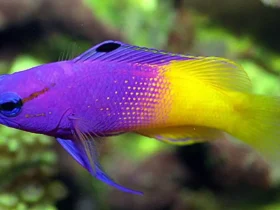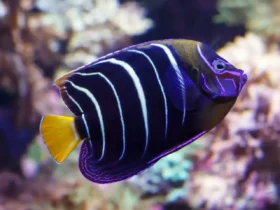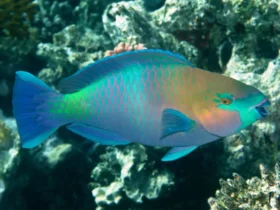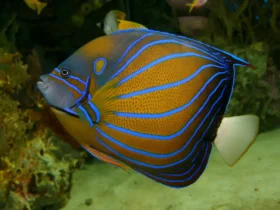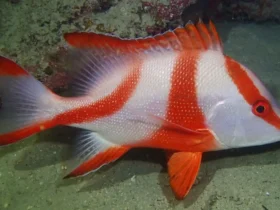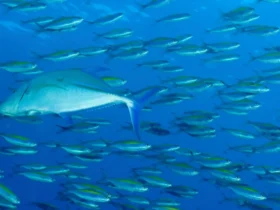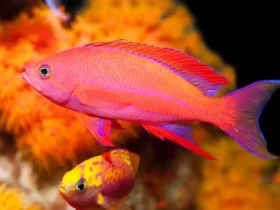Beneath the turquoise waters of tropical coral reefs, a regal beauty glides with grace and elegance—the Queen Angelfish (Holacanthus ciliaris). With its vibrant colors and intricate patterns, this magnificent marine creature reigns supreme among the coral reefs of the Caribbean Sea and western Atlantic Ocean. Join us as we delve into the captivating world of the Queen Angelfish, exploring its mesmerizing appearance, behavior, and ecological significance.
Queen Angelfish images
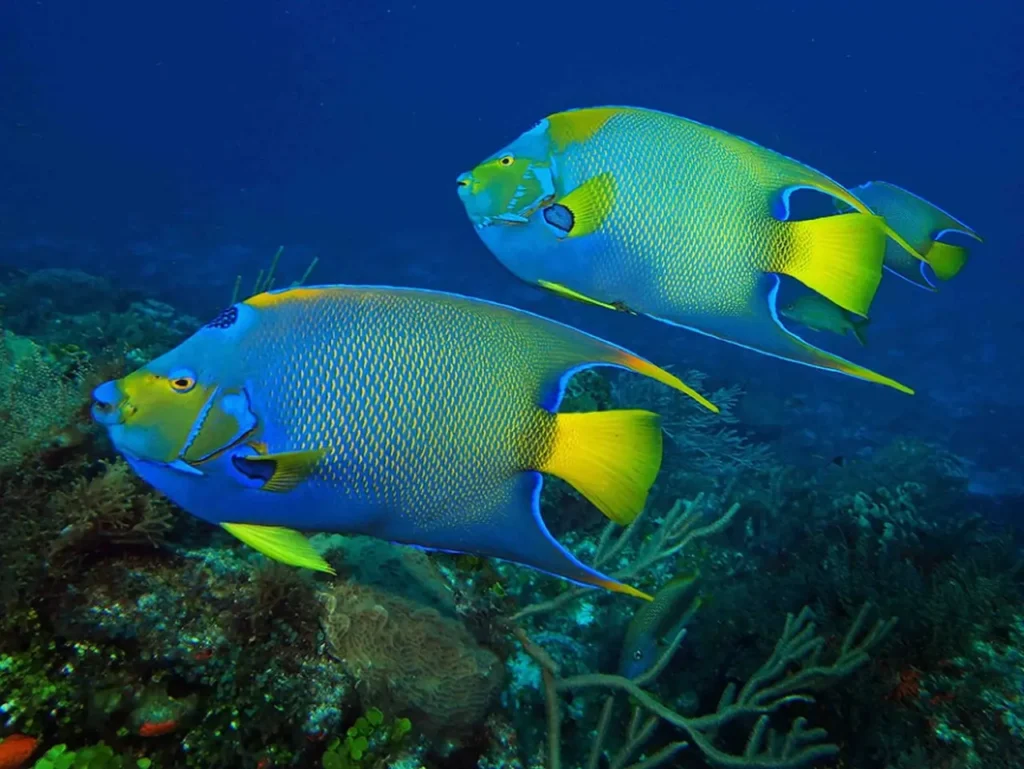
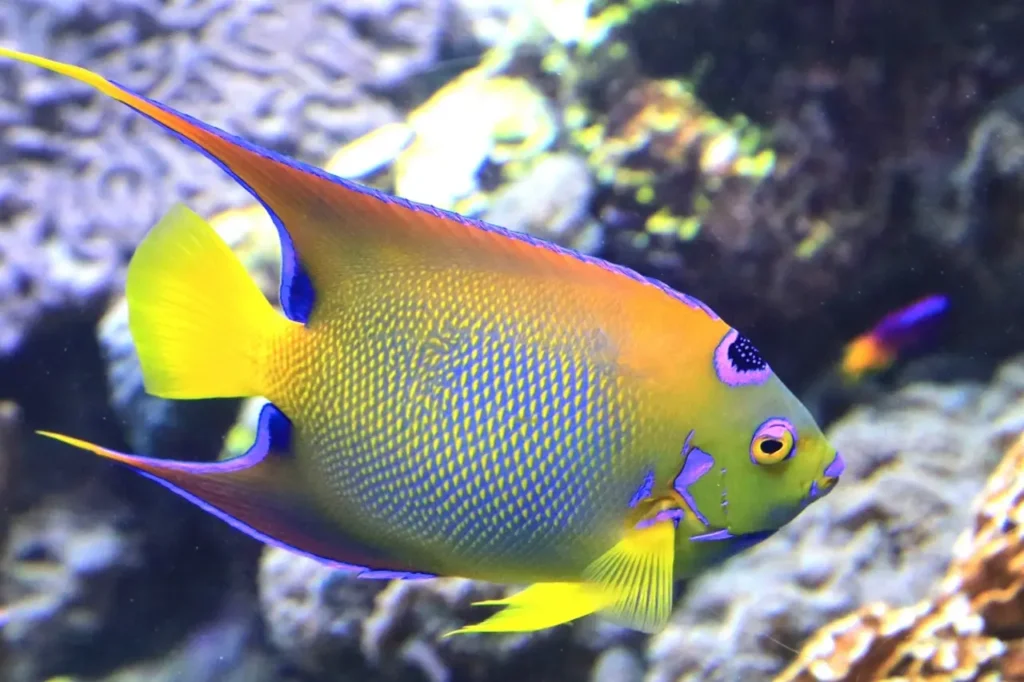
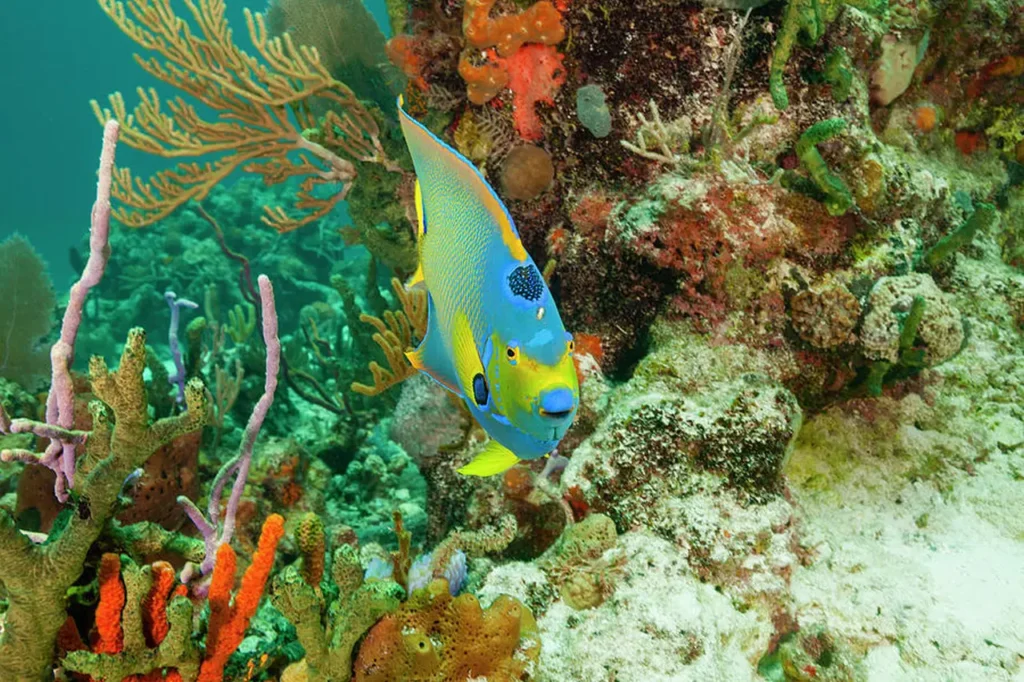
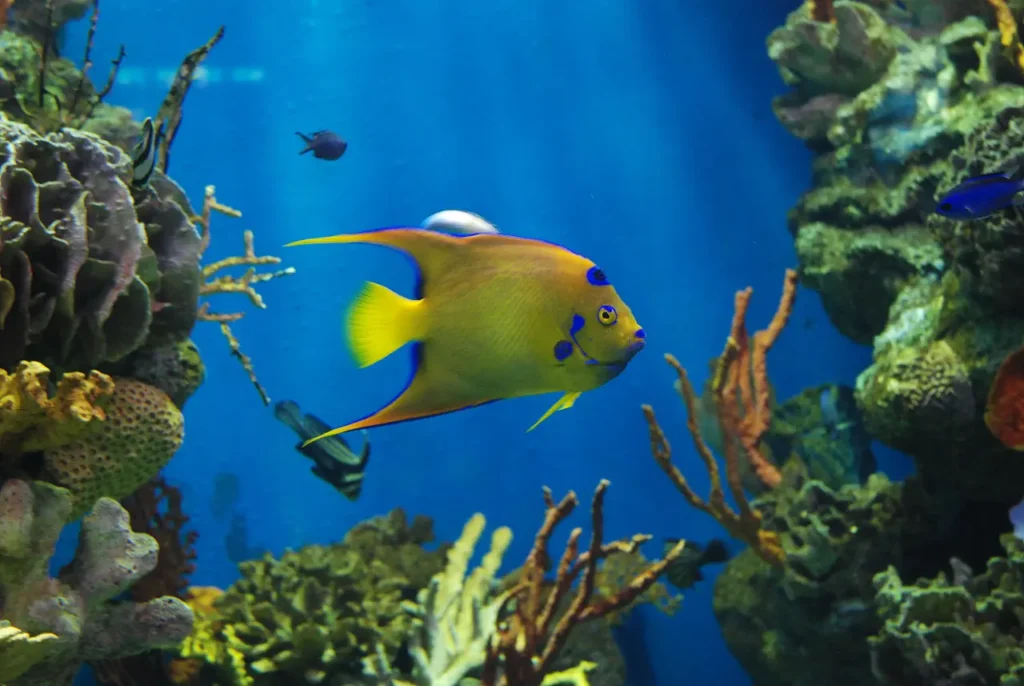
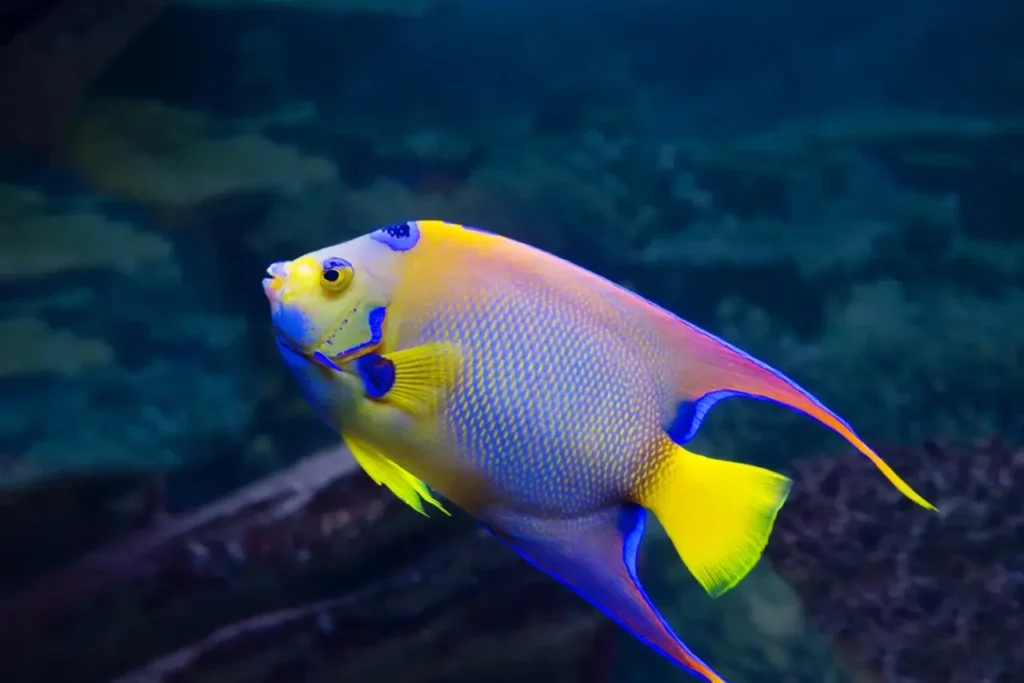
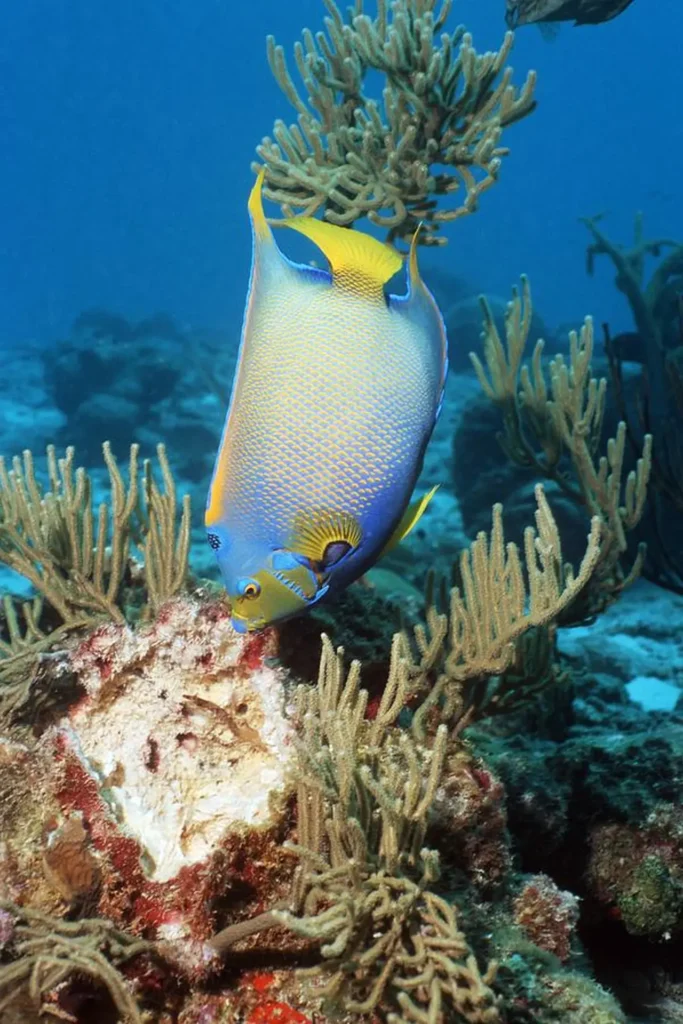
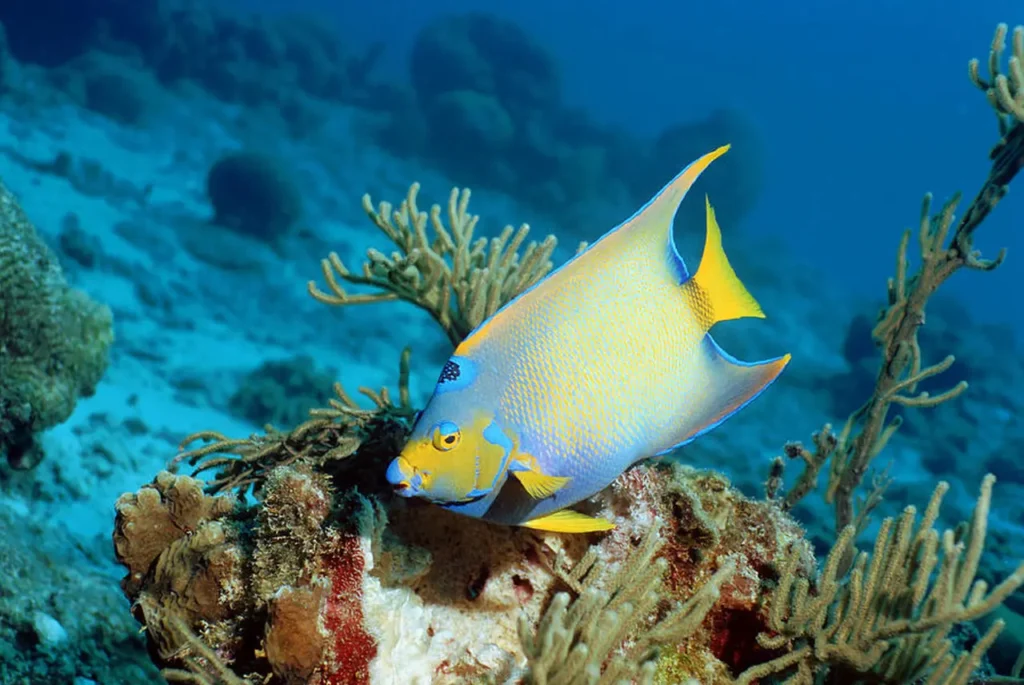
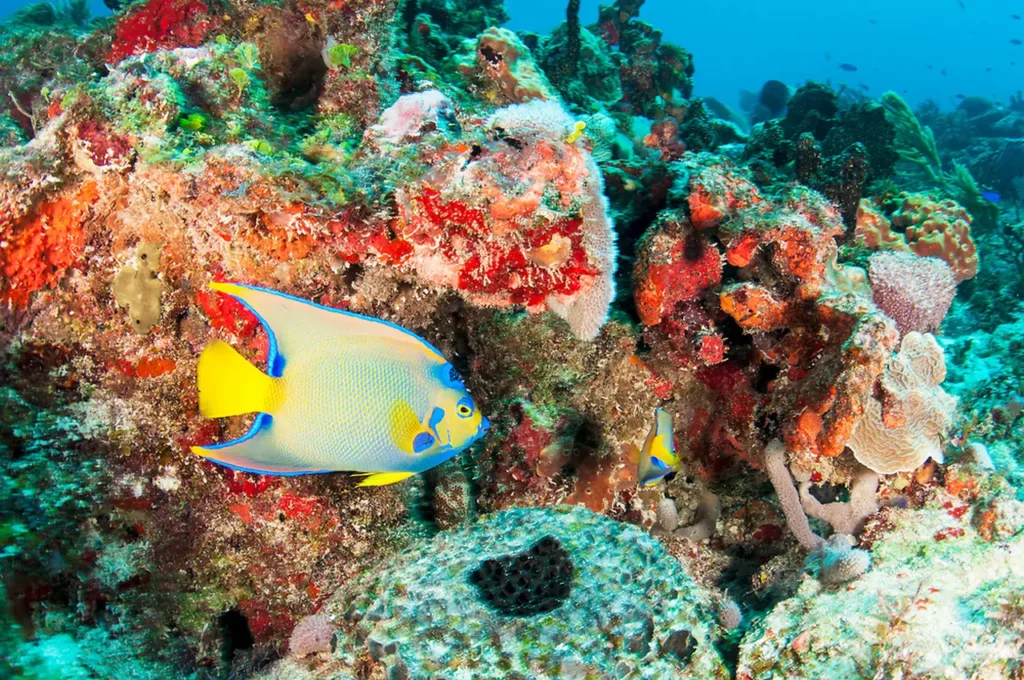
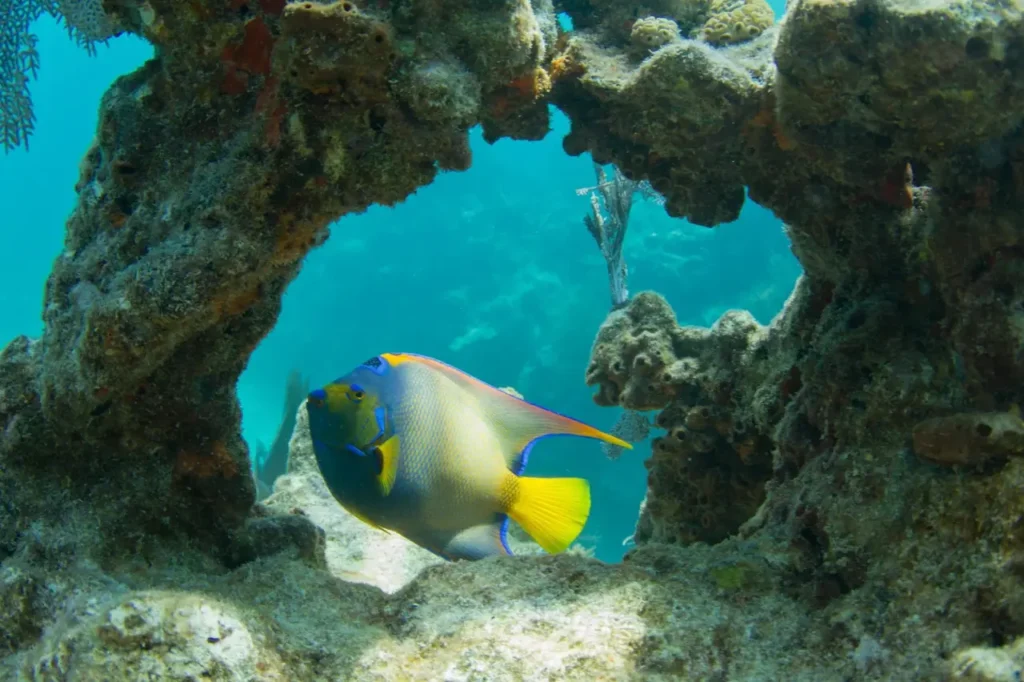
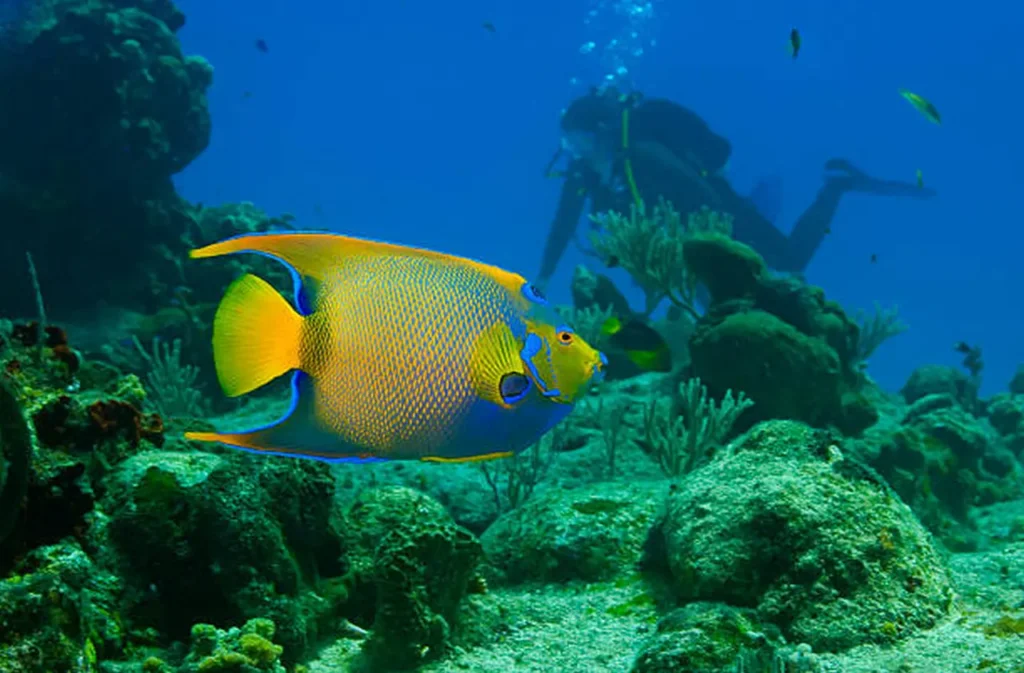
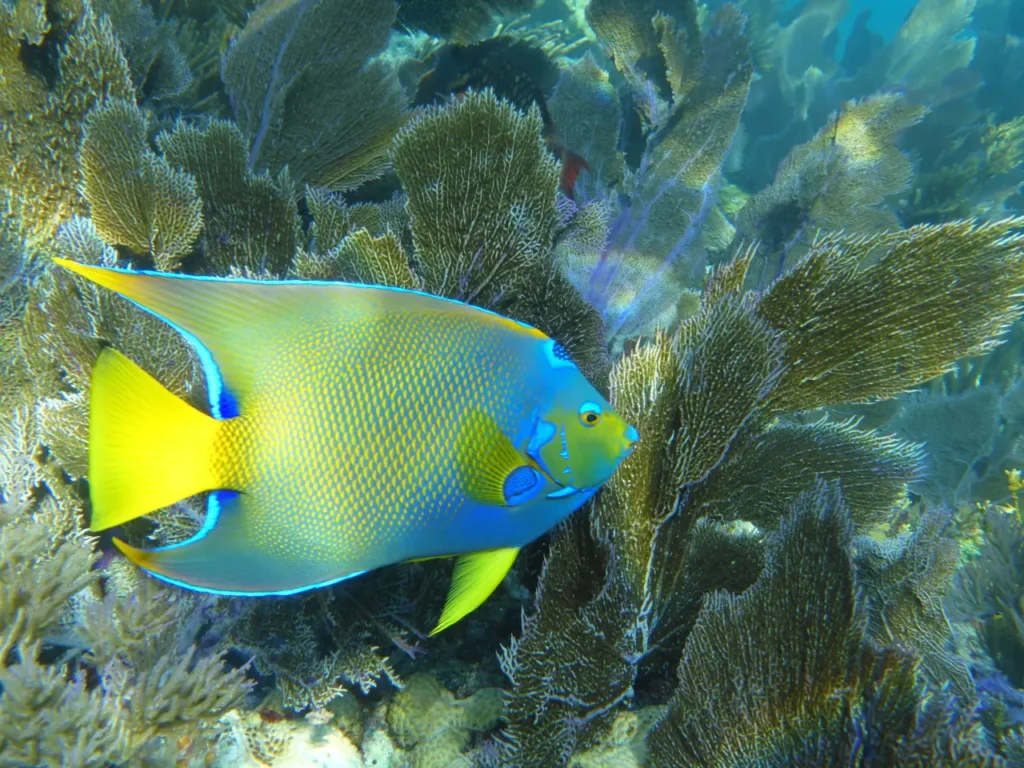
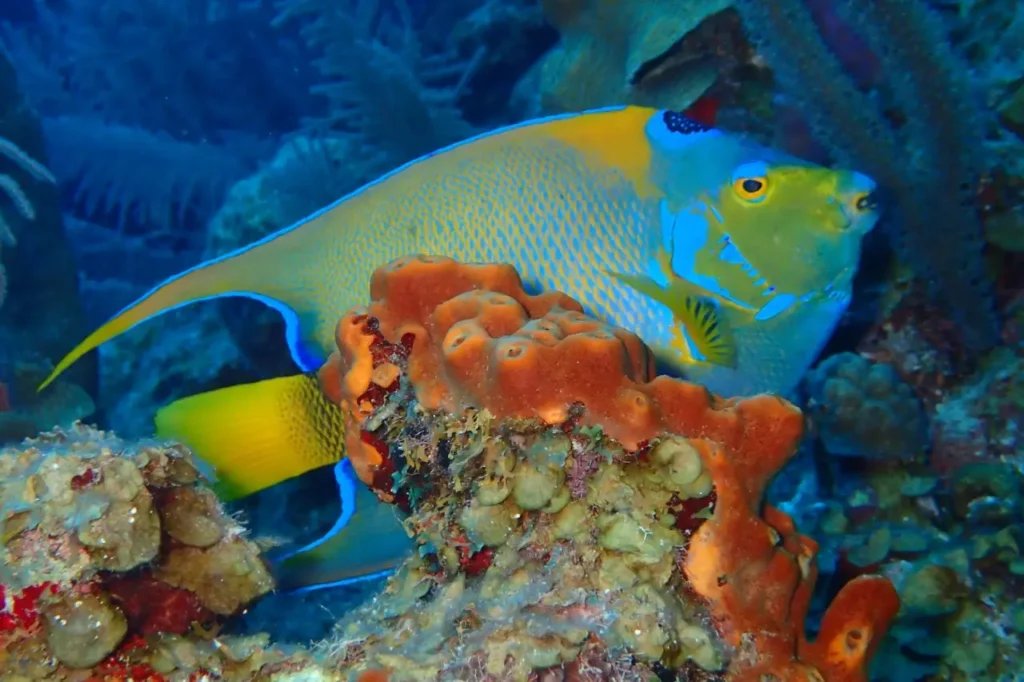
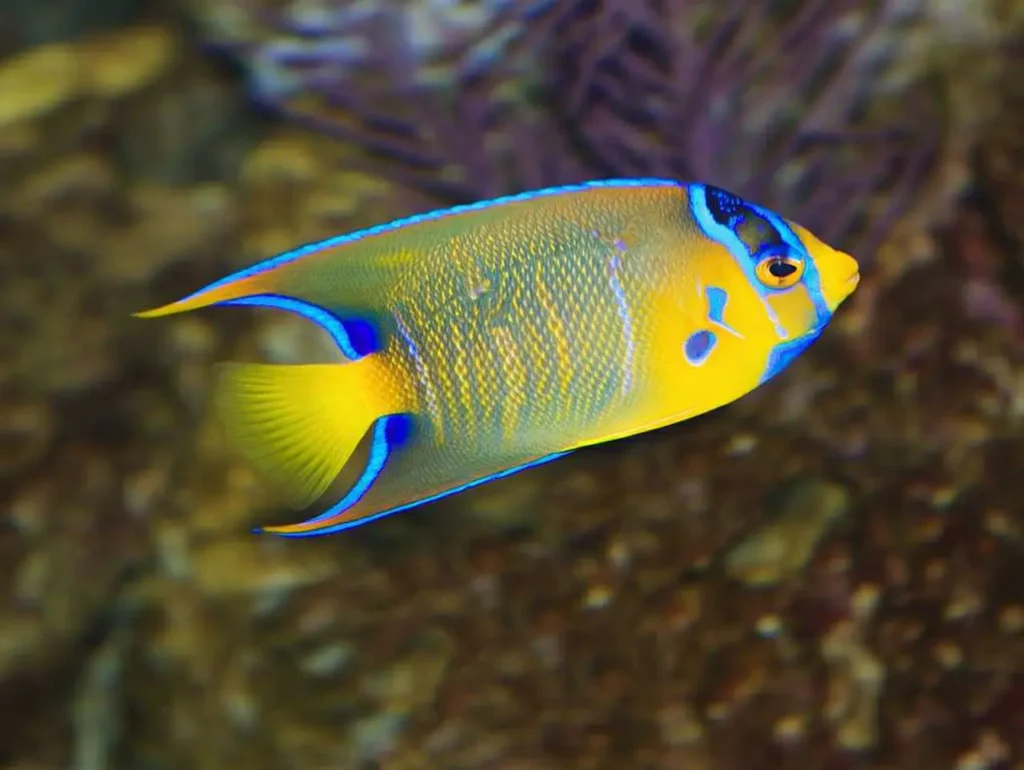
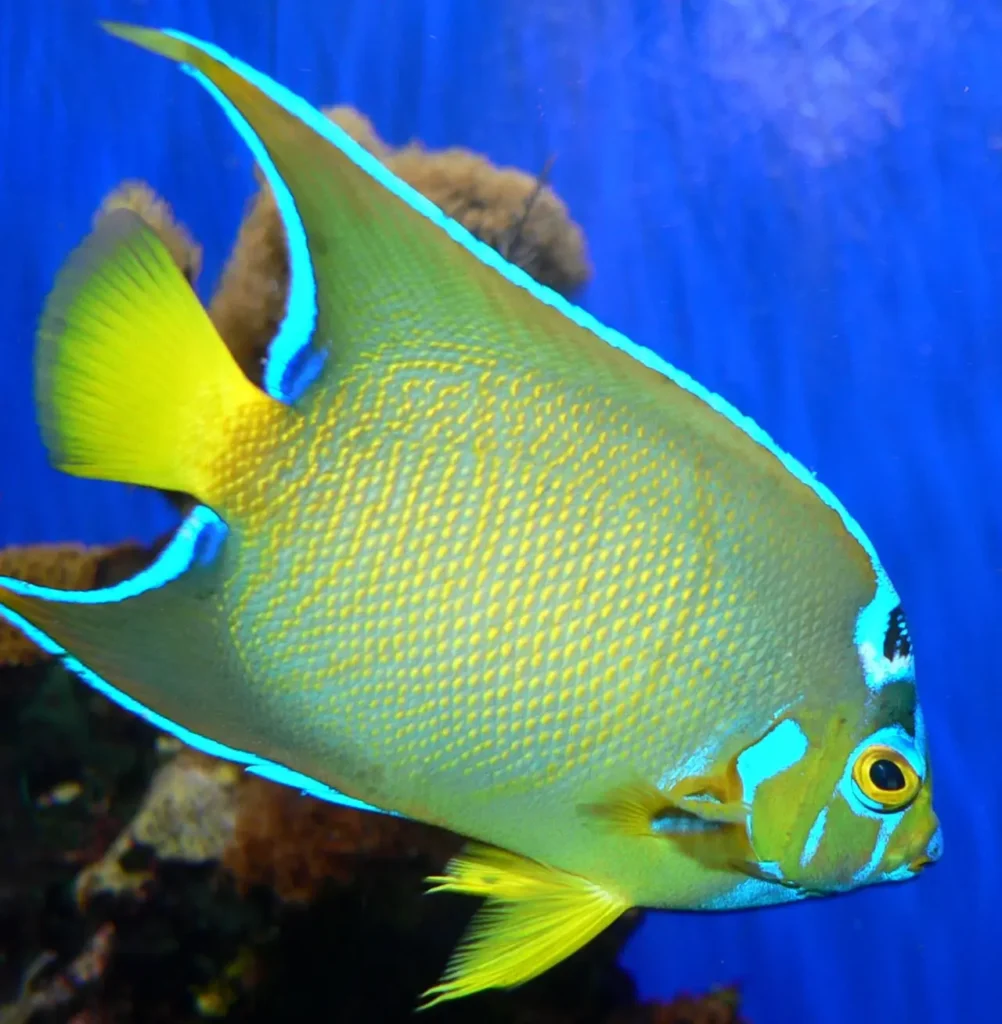
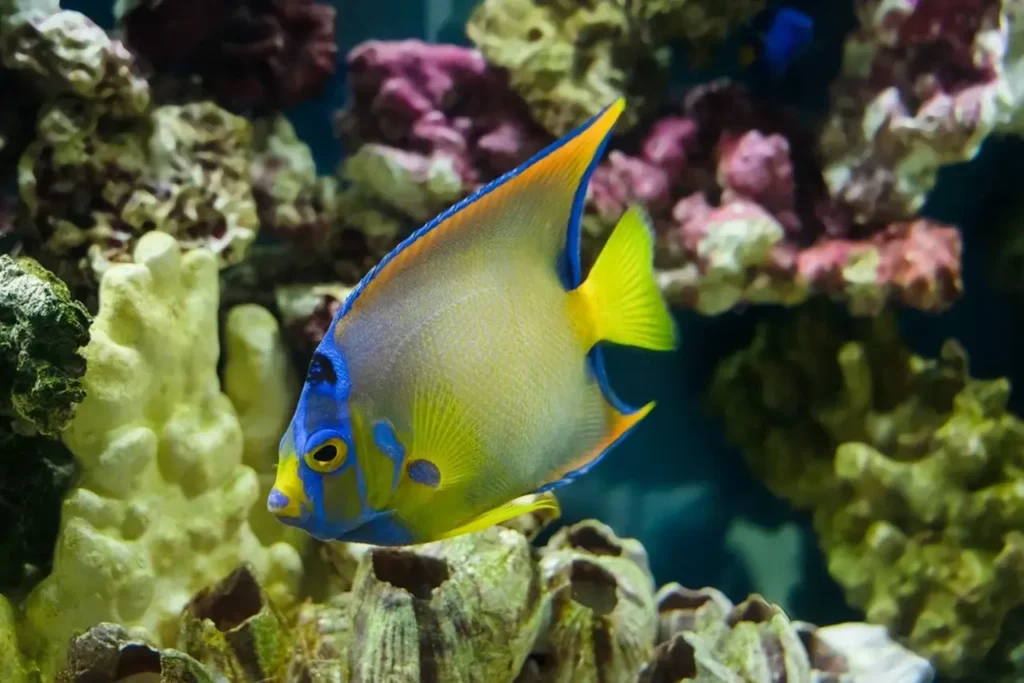
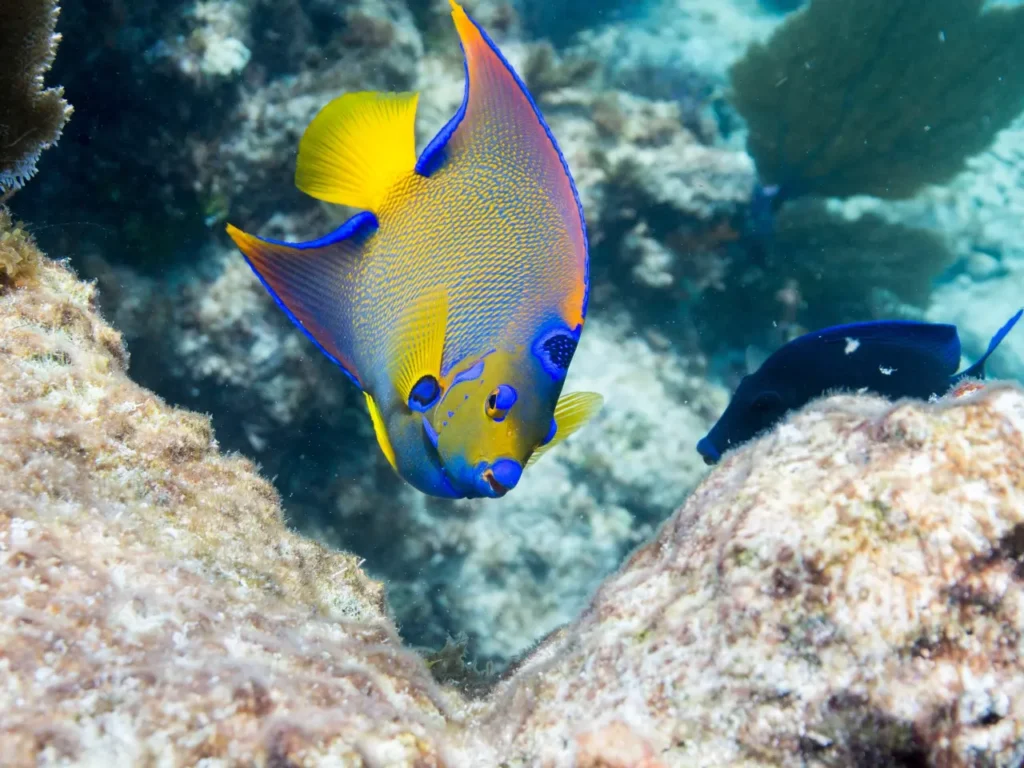
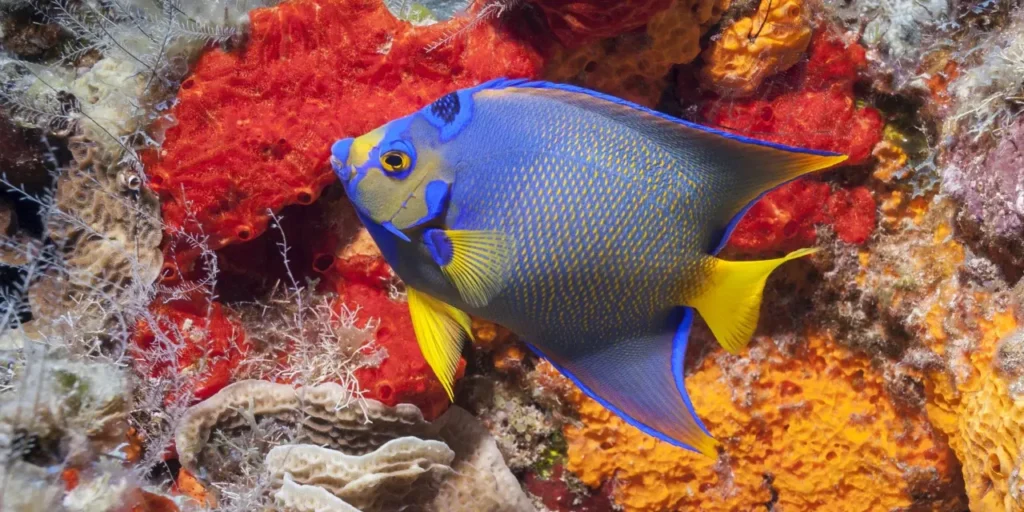
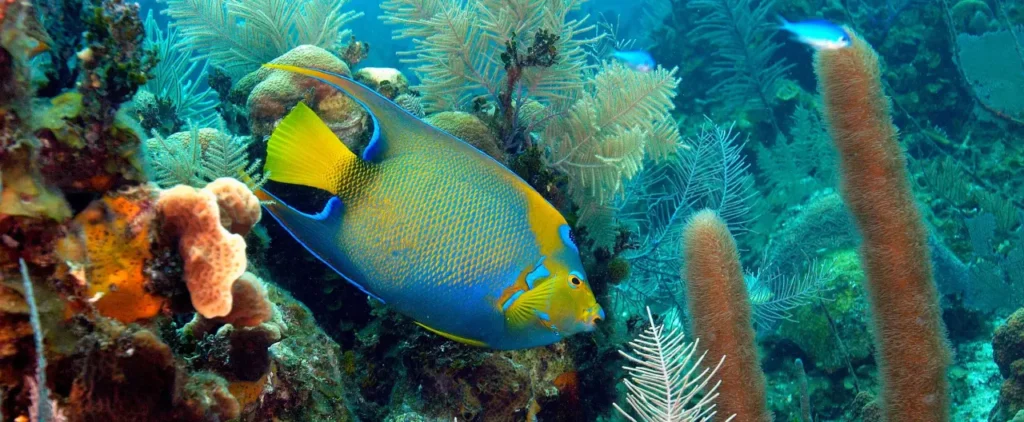
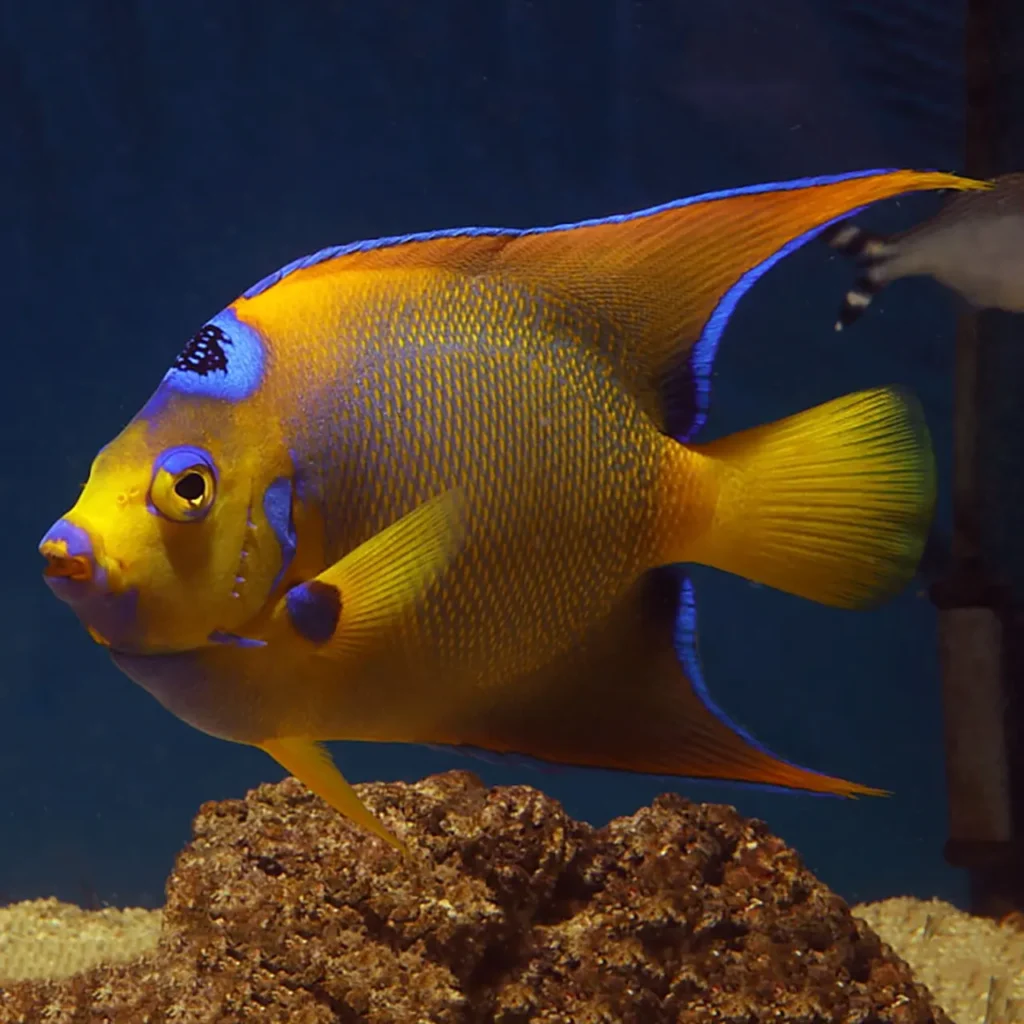
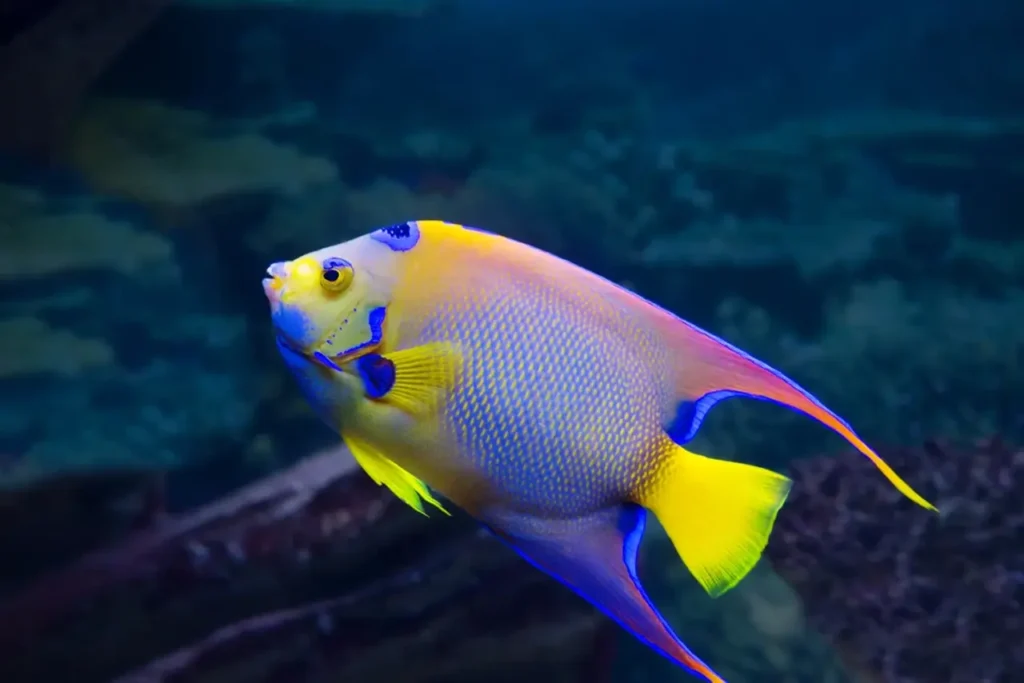
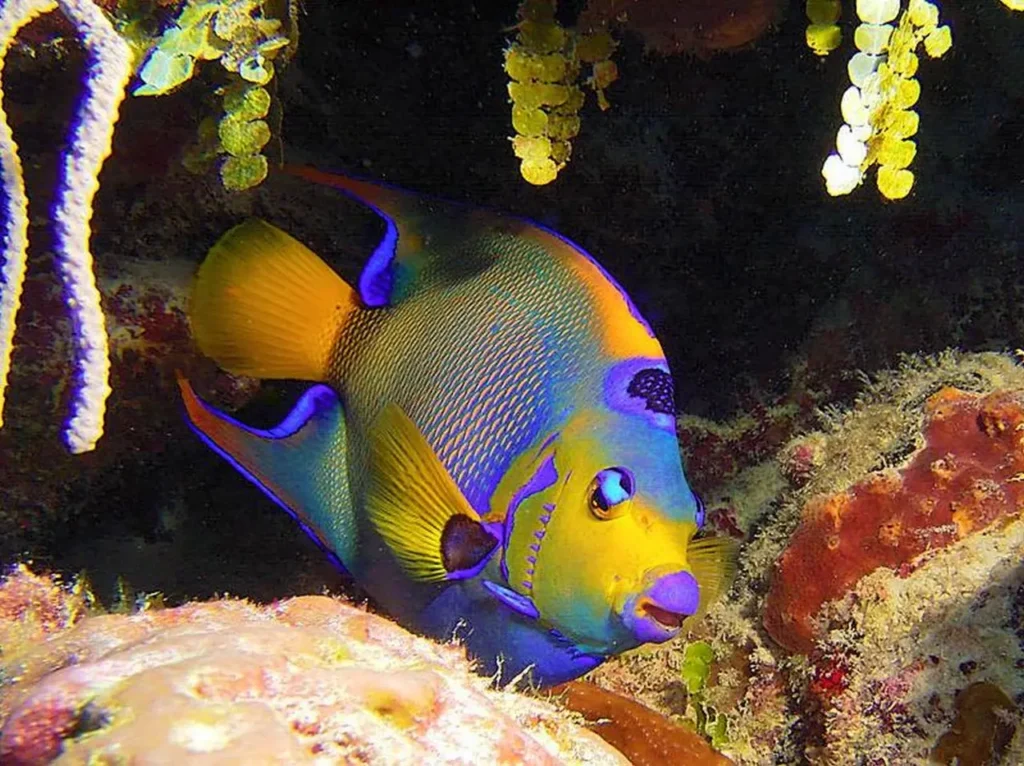
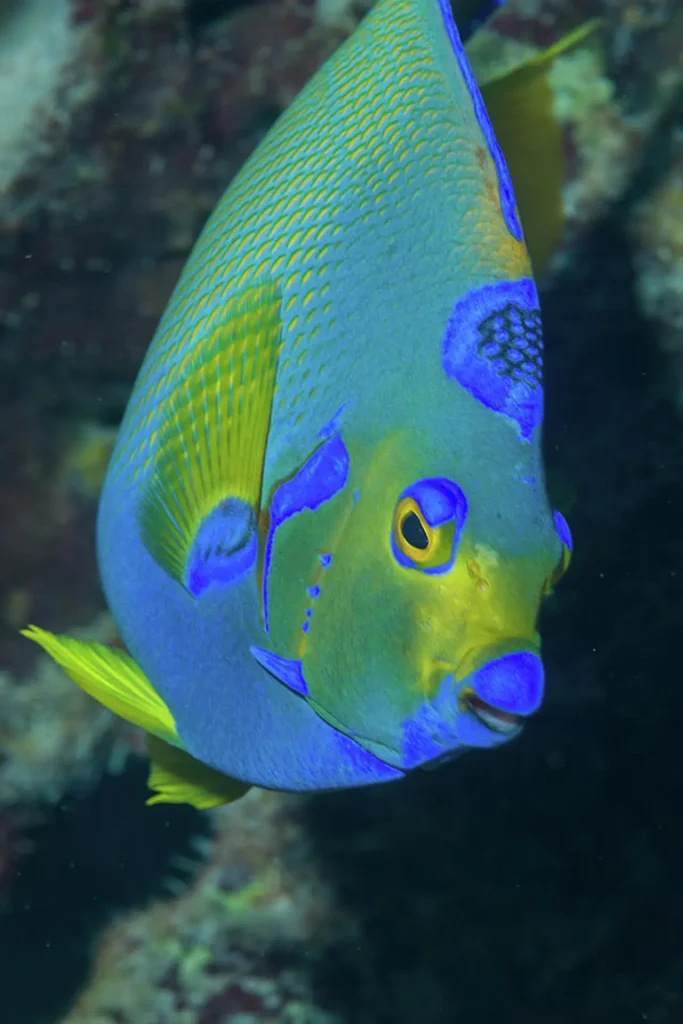
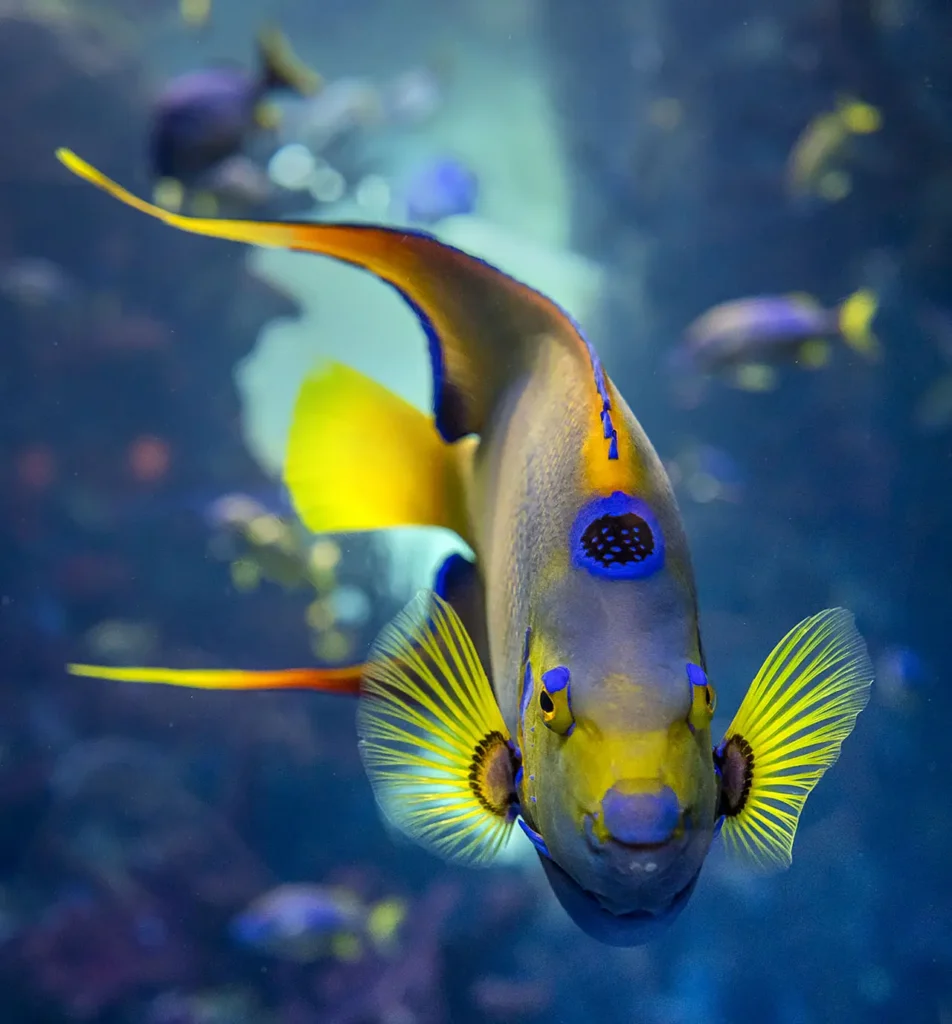
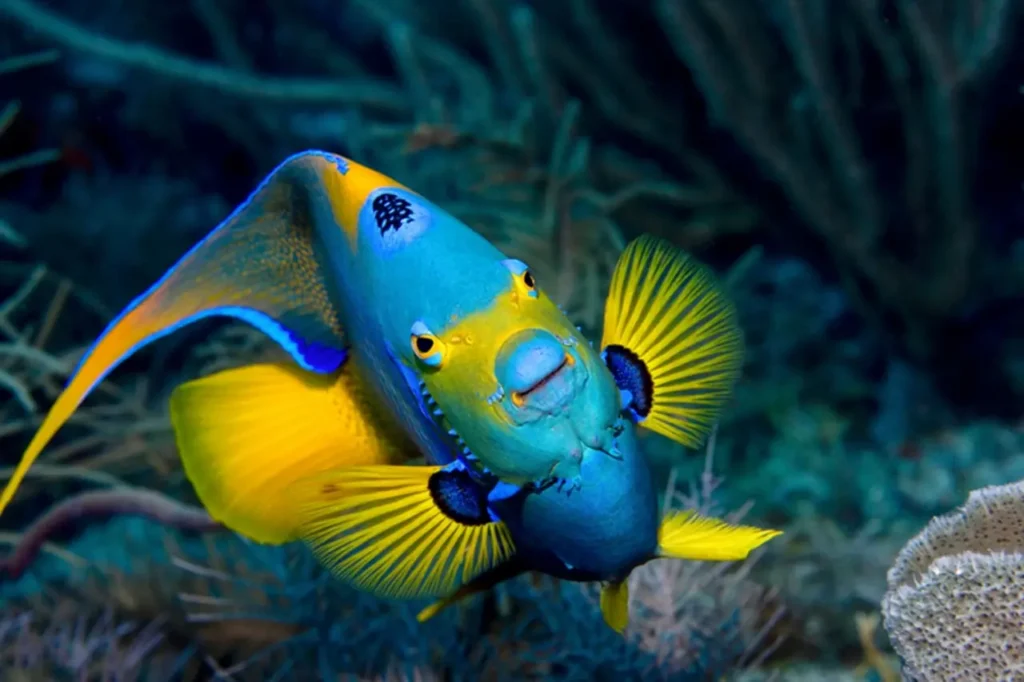
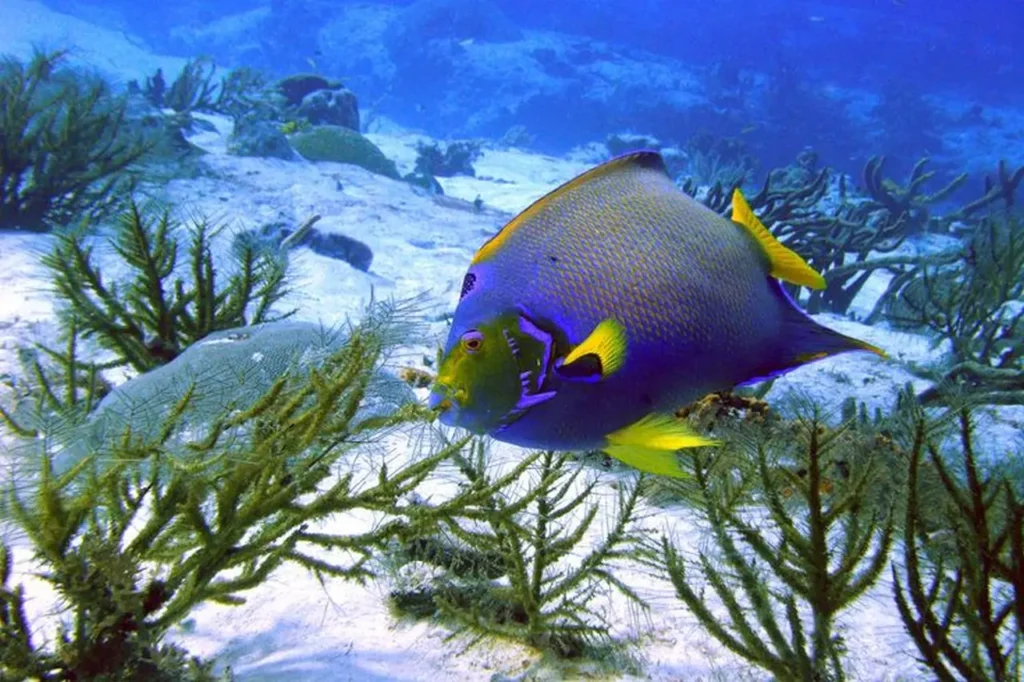
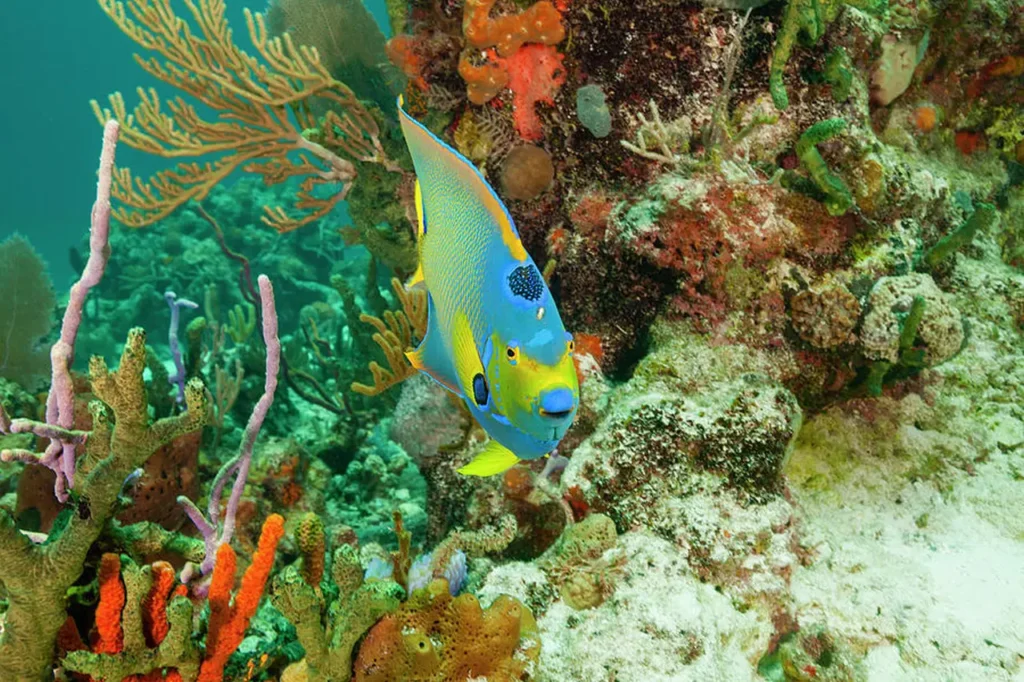
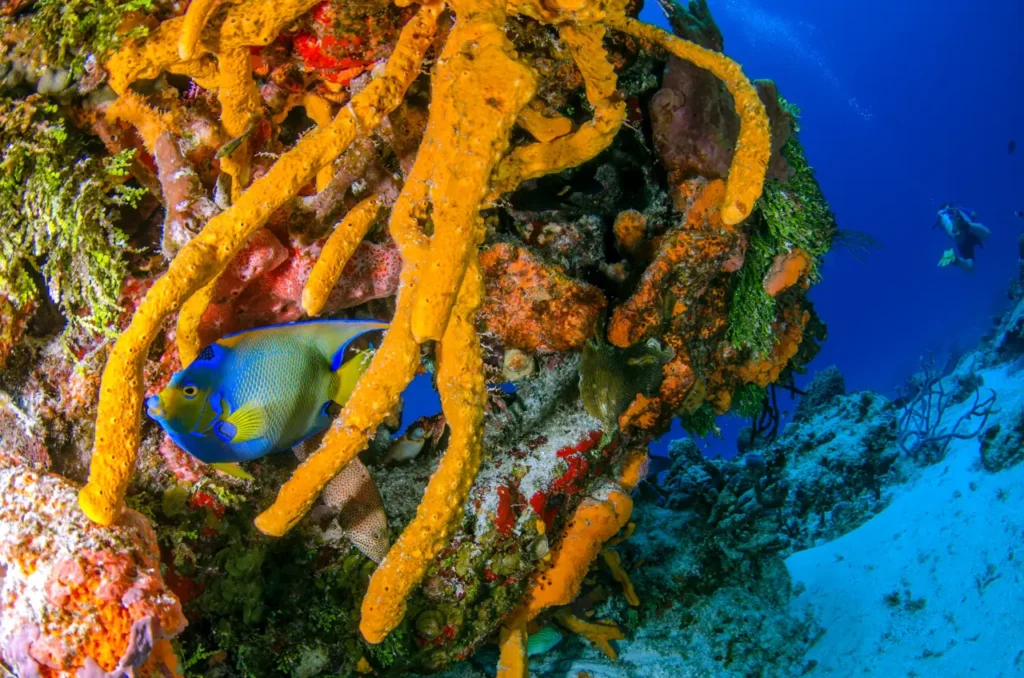
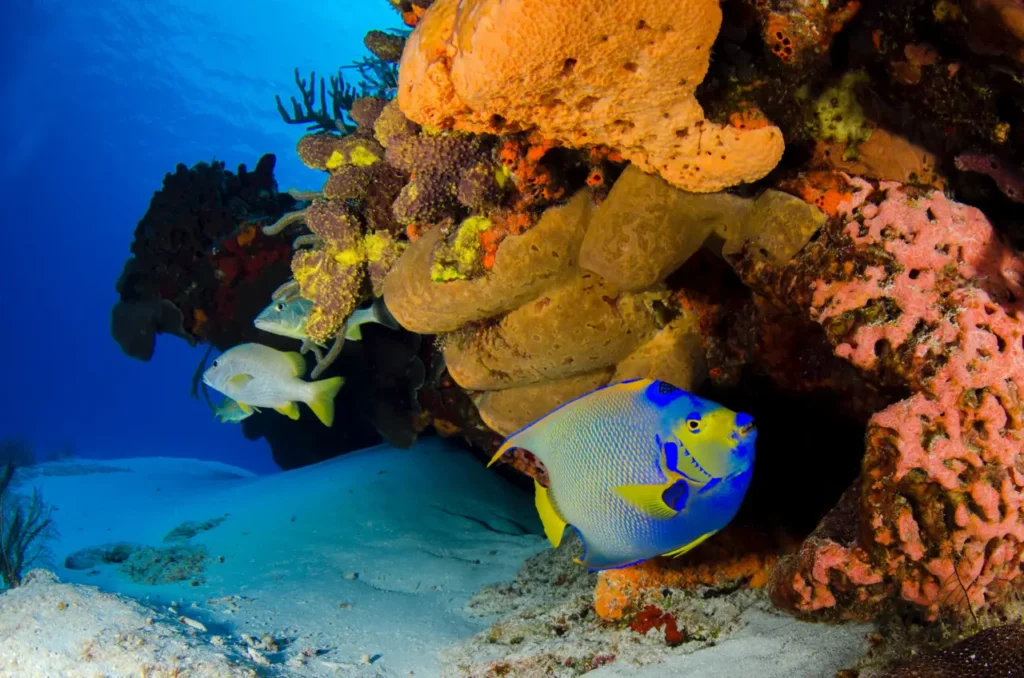
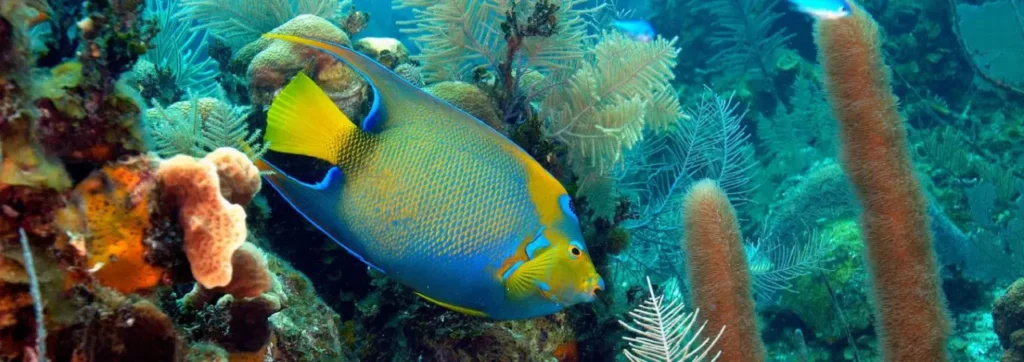
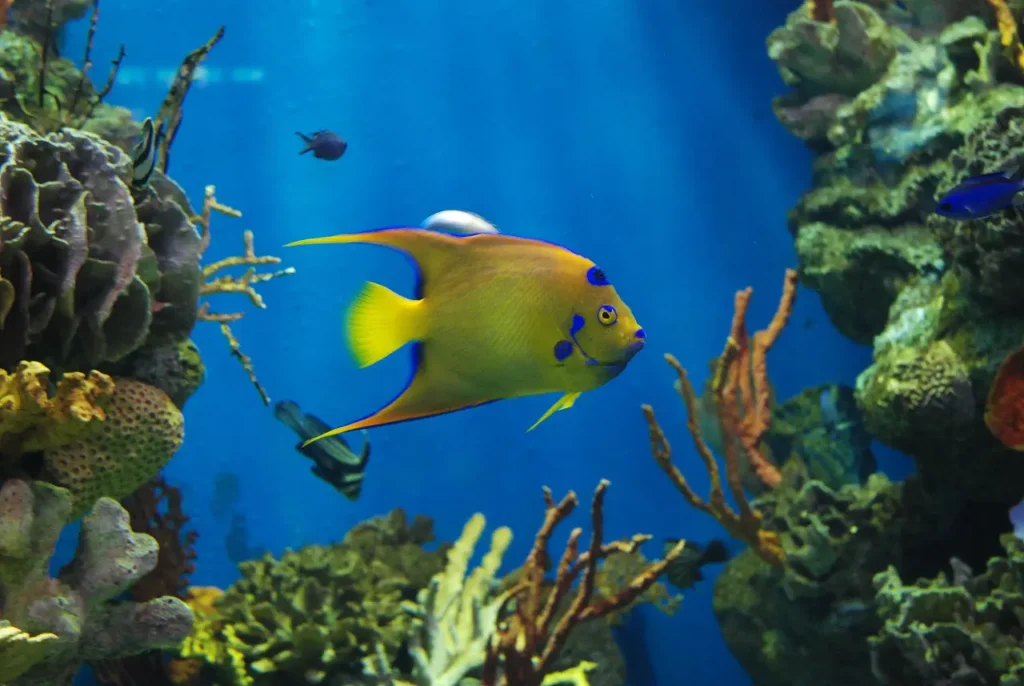
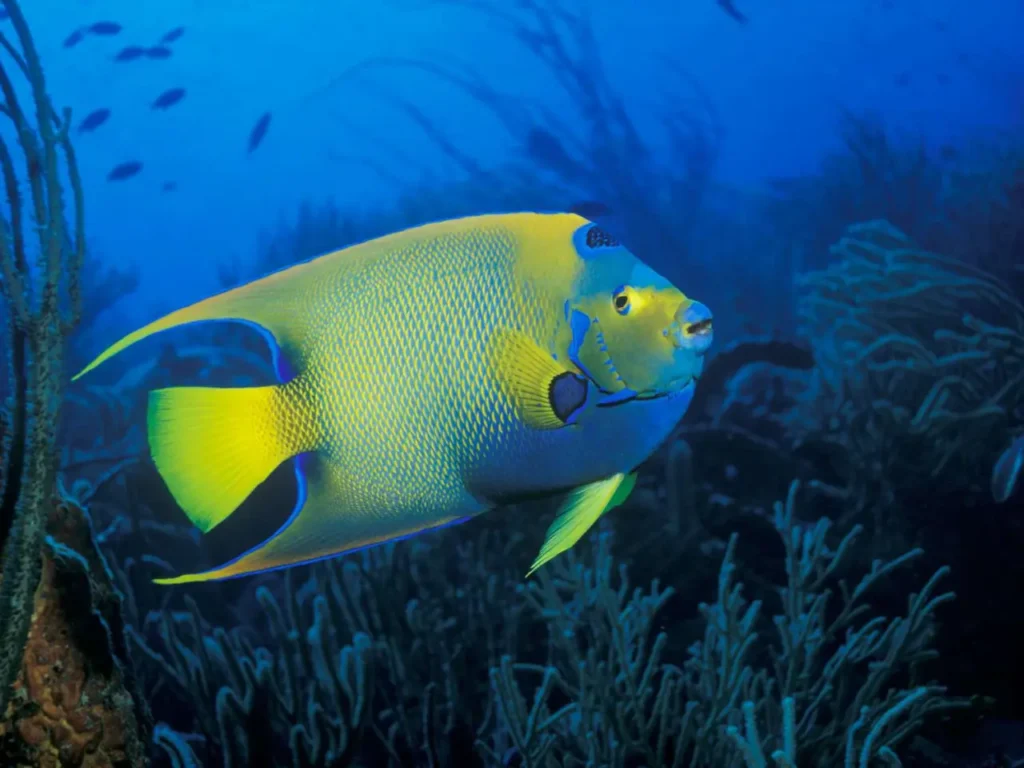
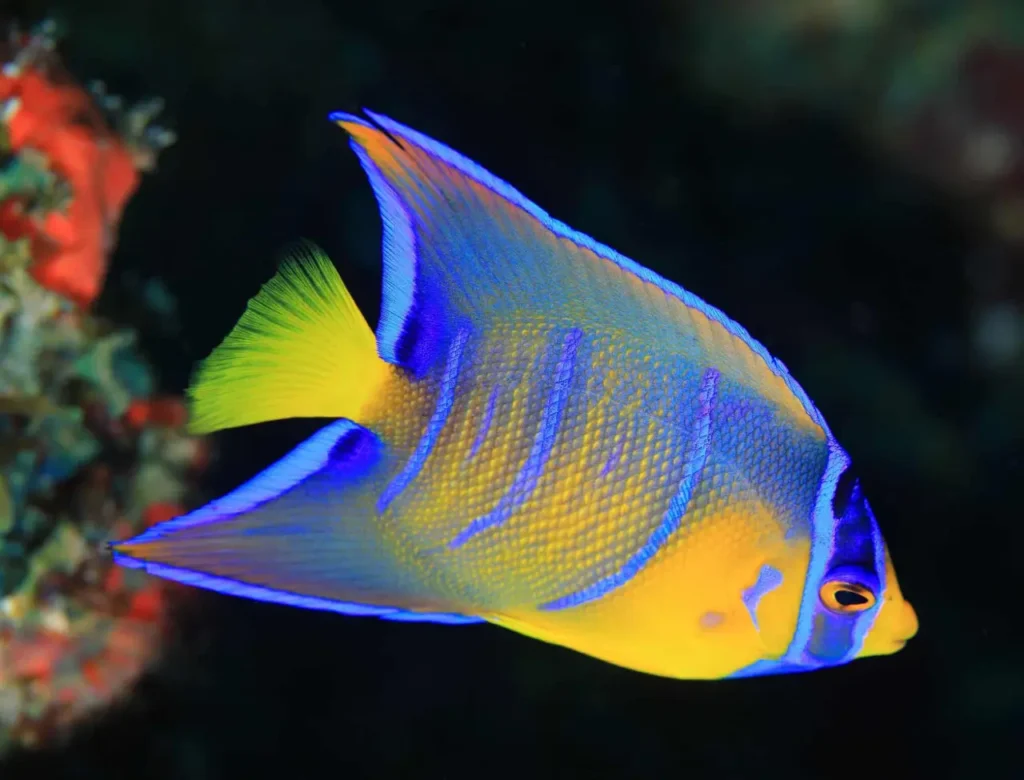
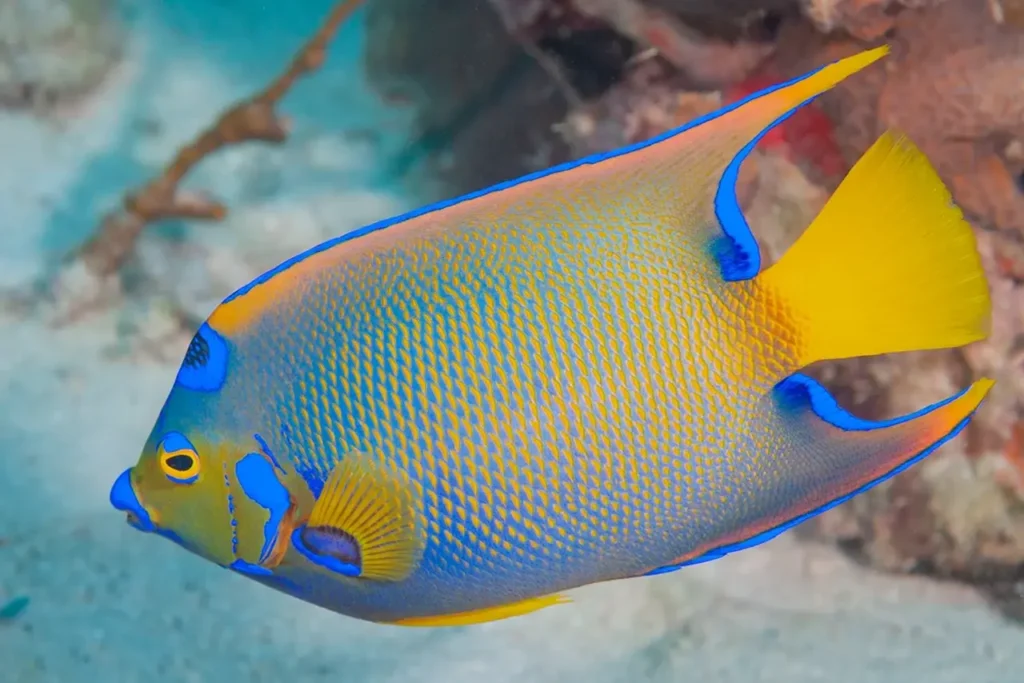
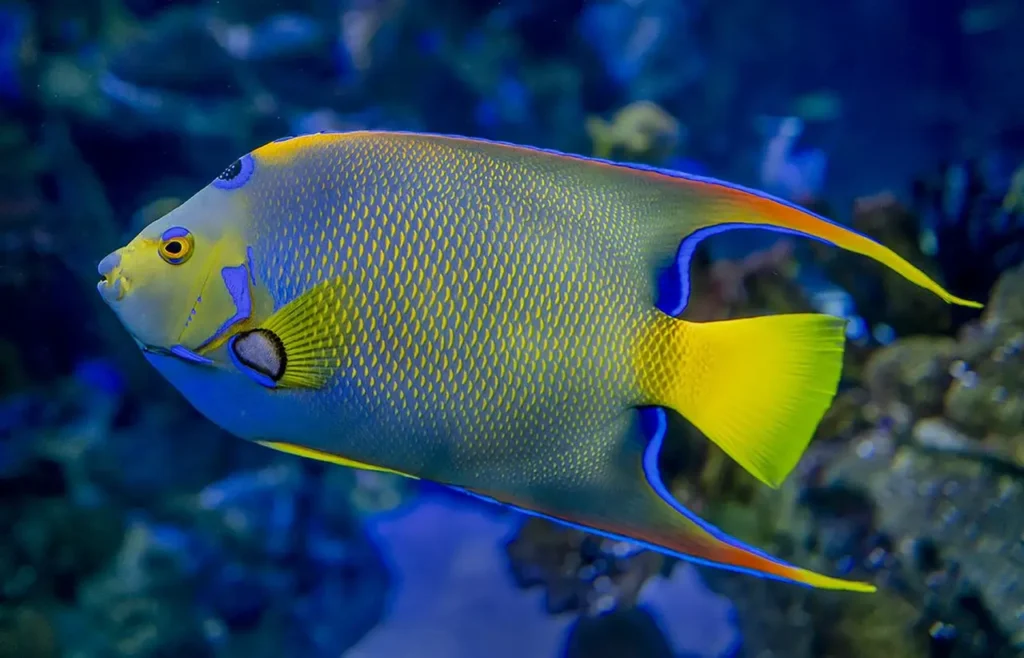
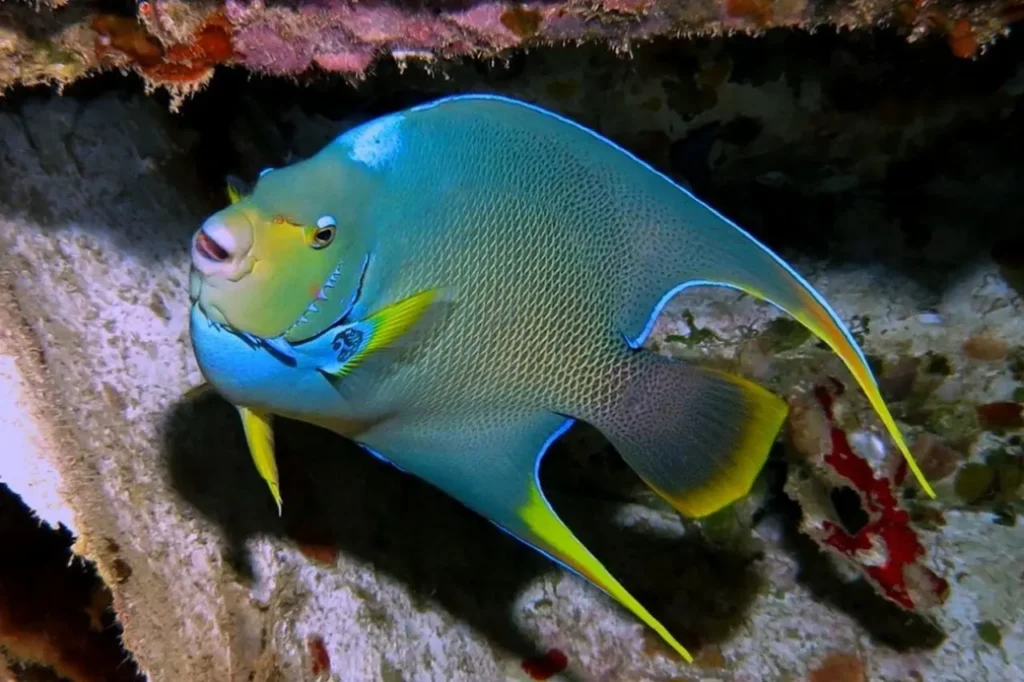
Appearance and Habitat
The Queen Angelfish is a striking fish renowned for its vibrant colors and intricate patterns. Its body is adorned with hues of electric blue, yellow, and orange, creating a visually stunning spectacle. The blue coloration dominates the upper body and fades to yellow on the lower body, while the face is marked by an intricate pattern of electric blue, dark blue, and black stripes. Fins are elongated and edged with a bright blue border, accentuating the fish’s regal presence.
Native to the warm waters of the western Atlantic Ocean, the Queen Angelfish inhabits coral reefs, preferring areas with ample hiding places and an abundance of sponges, algae, and coral polyps. It can be found in depths ranging from 10 to 100 feet, showcasing its captivating beauty to lucky divers and snorkelers.
Behavior and Diet
Queen Angelfish are generally solitary creatures, often encountered in pairs during courtship or when forming temporary groups for feeding. They are diurnal, active during the day, and spend their time exploring the reef in search of food and suitable habitat.
Their diet consists primarily of sponges, but they also consume algae, coral polyps, small invertebrates, and occasionally small fish eggs. The sharp, beak-like mouth allows them to nip and feed on these various food sources found within the reef ecosystem.
Reproduction and Life Cycle
During courtship, the Queen Angelfish engages in a beautiful and intricate dance. Males actively pursue females, swimming together in spiraling patterns, displaying their vibrant colors and fin movements to attract a mate. Once a pair is formed, they engage in a synchronized spawning event, releasing their eggs and sperm into the water column.
The eggs, buoyant and transparent, float freely until they hatch into larvae, which then join the planktonic community. These larvae undergo a lengthy pelagic phase, drifting with ocean currents, before eventually settling back onto the coral reefs as young juvenile fish.
Ecological Significance
The Queen Angelfish plays a crucial role in the health and balance of coral reef ecosystems. As a species that primarily feeds on sponges, it helps control the growth and spread of these organisms, preventing them from overpowering the coral reefs. Additionally, their excrement contributes valuable nutrients to the reef, enhancing the overall productivity of the ecosystem.
Conservation and Threats
The Queen Angelfish faces several threats, primarily stemming from human activities. Overfishing, destructive fishing practices, and habitat degradation due to coastal development and pollution pose significant challenges to its population. Climate change and coral bleaching events further impact its habitat and food sources. It is essential to promote sustainable fishing practices, protect coral reef habitats, and raise awareness about the importance of preserving these underwater ecosystems.
Appreciating Nature’s Majesty
The Queen Angelfish, with its regal appearance and vital role in coral reef ecosystems, exemplifies the captivating beauty and intricate interconnections found in the natural world. Its vibrant colors and graceful movements serve as a reminder of the fragility and awe-inspiring splendor of our oceans.
By fostering responsible tourism, supporting marine protected areas, and engaging in conservation efforts, we can ensure the preservation of the Queen Angelfish and thebreathtaking coral reef ecosystems it calls home. Let us cherish the Queen Angelfish as a symbol of the remarkable biodiversity and delicate balance found within our planet’s underwater realms, reminding us of the need to protect and preserve these invaluable habitats for generations to come.
